The ultimate guide to all the Different Types Of Frosting for your cakes, cookies, and more. When it comes to the "icing on the cake" we all want to get that pro finish, and this list of the different types of frosting will help you choose the best option.

First, I'll go through the frosting categories and then break them down further with examples. I'll also recommend how to use each type of frosting, its difficulty level, and the pros and cons. If you have ever had questions about different kinds of frosting, you'll find the answers here!
Jump to:
- ❓What is the difference between frosting and icing?
- ❓What is the difference between frosting and buttercream?
- 📝 What are the different types of frosting?
- 1. Traditional Frostings
- 2. Buttercream Frostings
- 3. Meringue Frostings
- 4. Cooked Frostings
- 🧁 Frosting Recipes
- 🍰 Different Types of Frosting Recipes
- 25+ Different Types Of Frosting For Cakes and Cupcakes
❓What is the difference between frosting and icing?
The answer to this question comes down to ingredients, texture, and geography! In some parts of the world, the terms are used interchangeably. But generally, a frosting recipe has fat as the core base ingredient (e.g., butter or cream cheese), and an icing recipe has powdered sugar as the base (e.g., fondant icing or a mirror glaze).
Frosting also contains sugar, and icing can sometimes contain fat, but the ratio of ingredients and how they are combined are important when differentiating between the two. When it comes to texture, a frosting recipe will be thicker and require piping or spreading onto cakes and baked goods, whereas icing is generally thinner.
❓What is the difference between frosting and buttercream?
Buttercream is a type of frosting made from creaming butter with other ingredients. Buttercream can be a type of frosting. Frosting is a general term, but it also refers to a traditional frosting made with a cream or shortening (that isn't butter).
Uncolored frosting will be white, whereas buttercream will have a yellow color from the butter unless food coloring is used.
Buttercream also has a richer taste and a more dense texture. It will harden in the fridge, melt in hot temperatures, and form a crust over time.
📝 What are the different types of frosting?
1. Traditional Frostings
A basic cake frosting recipe contains powdered sugar, fat (e.g. heavy cream or cream cheese), flavorings like vanilla, and milk or water. Often, vegetable shortening is used as the fat in commercial frostings that you can buy in stores. It is relatively stable, can be colored and flavored, and is super simple and easy to make.

2. Buttercream Frostings
A basic buttercream is made by creaming butter with powdered sugar (also known as icing sugar or confectioners sugar) and then adding flavorings. There are 6 main types of buttercream frosting, with the most commonly used being traditional American buttercream (AMBC).
Russian buttercream (RBC), German buttercream (GBC), French buttercream (FBC), Swiss meringue buttercream (SMBC), and Italian meringue buttercream (IMBC) have other ingredients whipped in. This stabilizes them further, lessens the need for excess sugar, and adds texture.
Buttercream frostings are generally very stable and will last, so are suitable for make-ahead desserts. However, all buttercreams will melt in hot temperatures and harden in the fridge.

3. Meringue Frostings
In some different kinds of cake frosting, egg whites are whipped with sugar and then combined with the other ingredients. The famous 7-minute frosting (or boiled frosting) is a Swiss meringue made by dissolving sugar into egg whites over a double boiler and then whipping them with flavoring. Italian meringue buttercream (IMBC) and Swiss meringue buttercream (SMBC), are other popular types of frosting made with meringue.

4. Cooked Frostings
Any kind of cake frosting types that requires an element of heat is classed as cooked frosting. Ermine frosting, French buttercream, German buttercream (GBC), 7-minute frosting, SMBC, and IMBC are all cooked frostings, and I'll explain more about each one below.

🧁 Frosting Recipes
1. American Buttercream
Make a classic buttercream frosting by creaming butter with powdered sugar and sometimes a small amount of milk. It's super simple, and super versatile! You can easily flavor American buttercreams with fruit, like my Lemon Buttercream or Raspberry Buttercream, add chocolate or cocoa powder to make Chocolate buttercream frosting, or try my White Chocolate frosting, or even Coffee Buttercream. Dial up the fun with a Funfetti buttercream frosting!
Difficulty level - Easy
Sweetness - High
Does it need to be refrigerated? Yes, but it will be safe at room temperature for a few hours.
Pros - AMBC can be piped, is easy to flavor/color, and keeps well.
Cons - American buttercream frosting will develop a thin crust over time, melt at high temperatures, and harden in the fridge. It can also be very sweet and has no overly complex flavor profile.

2. Swiss Meringue Buttercream
To make Swiss meringue buttercream frosting (SMBC), you add room-temperature butter to a Swiss meringue. It is slightly less sweet than American buttercream and has a stable texture. The meringue gives the frosting a silky, glossy appearance to cake filling, and the butter adds richness and flavor.
SMBC can be flavored similarly to AMBC; at the end of the whipping process, add cocoa powder, fruit jams or reductions, melted (but not hot) chocolate, spices, nut butter, crushed cookies, and so on.
Difficulty level - Moderate
Sweetness - Medium
Does it need to be refrigerated? Yes
Pros - SMBC is great for piping, not too sweet, and has a fantastic texture.
Cons - There are more steps in an SMBC recipe, and you will need some extra time and pieces of kitchen equipment.

3. Italian Meringue Buttercream
Italian buttercream has the same base ingredients as Swiss meringue buttercream, but hot sugar syrup is whipped into the egg whites instead. It is very stable, has a rich buttery flavor, and is less sweet than American buttercream. Use IMBC to pipe on top of cakes and other desserts.
IMBC can be flavored similarly to AMBC or SMBC.
Difficulty level - Moderate
Sweetness - Medium
Does it need to be refrigerated? Yes
Pros - IMBC is very stable, slightly more so than SMBC. You can also use a kitchen torch for an undoubtedly fancy finish.
Cons - It can be tricky to make the hot sugar syrup. Therefore, use a sugar thermometer for best results.

4. Russian Buttercream
Make Russian buttercream (also known as condensed milk frosting or condensed milk buttercream) by creaming room-temperature butter and then adding condensed milk, flavorings like vanilla extract, and salt. RMBC does not have additional sugar, as the sweetness comes from the condensed milk.
Russian buttercream can also be flavored at the last step. However, it is slightly less stable than American, Italian, or Swiss meringue buttercream; therefore, refrain from adding too many liquid flavorings (e.g., jam) at the end.
Difficulty level - Easy
Sweetness - High
Does it need to be refrigerated? Yes
Pros - RMBC has a very creamy, milky flavor and is so easy to make. What's more, you probably have all the ingredients already in your pantry.
Cons - Russian buttercream does not hold long, especially in warm temperatures. Don't use it on make-ahead desserts.

5. French Buttercream
French buttercream is certainly a rich, decadent cake frosting made with egg yolks, butter, and sugar syrup. It has a very soft, creamy, custardy texture, and while it is very rich due to the butter and egg yolks; it is perfectly balanced. Use French buttercream to fill cakes or French pastries like macarons.
You can color or flavor French buttercream just like Russian buttercream, paying close attention to the texture.
Difficulty level - Moderate
Sweetness - Low
Does it need to be refrigerated? Yes
Pros - French buttercream has a super smooth frosting finish and a rich flavor profile. In conclusion, it is almost like custard. What's not to love?
Cons - It is a little more challenging to make and has a natural yellow color from butter and egg yolks. If you do not want this appearance, use food coloring.

6. German Buttercream
Have you ever tried crème mousseline, or German buttercream? It is an enriched pastry cream that uses egg yolks, milk, butter, and a thickening ingredient. For a chocolate hazelnut version, you should certainly try my homemade Nutella Frosting. Or, for a hazelnut only version try the hazelnut mousseline cream I made to fill my Paris Brest.
Difficulty level - Moderate
Sweetness - Low
Does it need to be refrigerated? Yes
Pros - It is rich and complex in flavor, and much less sweet than American buttercream.
Cons - There are several steps, and it can be more challenging. However, my step-by-step recipe makes it much easier to make than you might think! It is also the one buttercream that is more sensitive to heat.
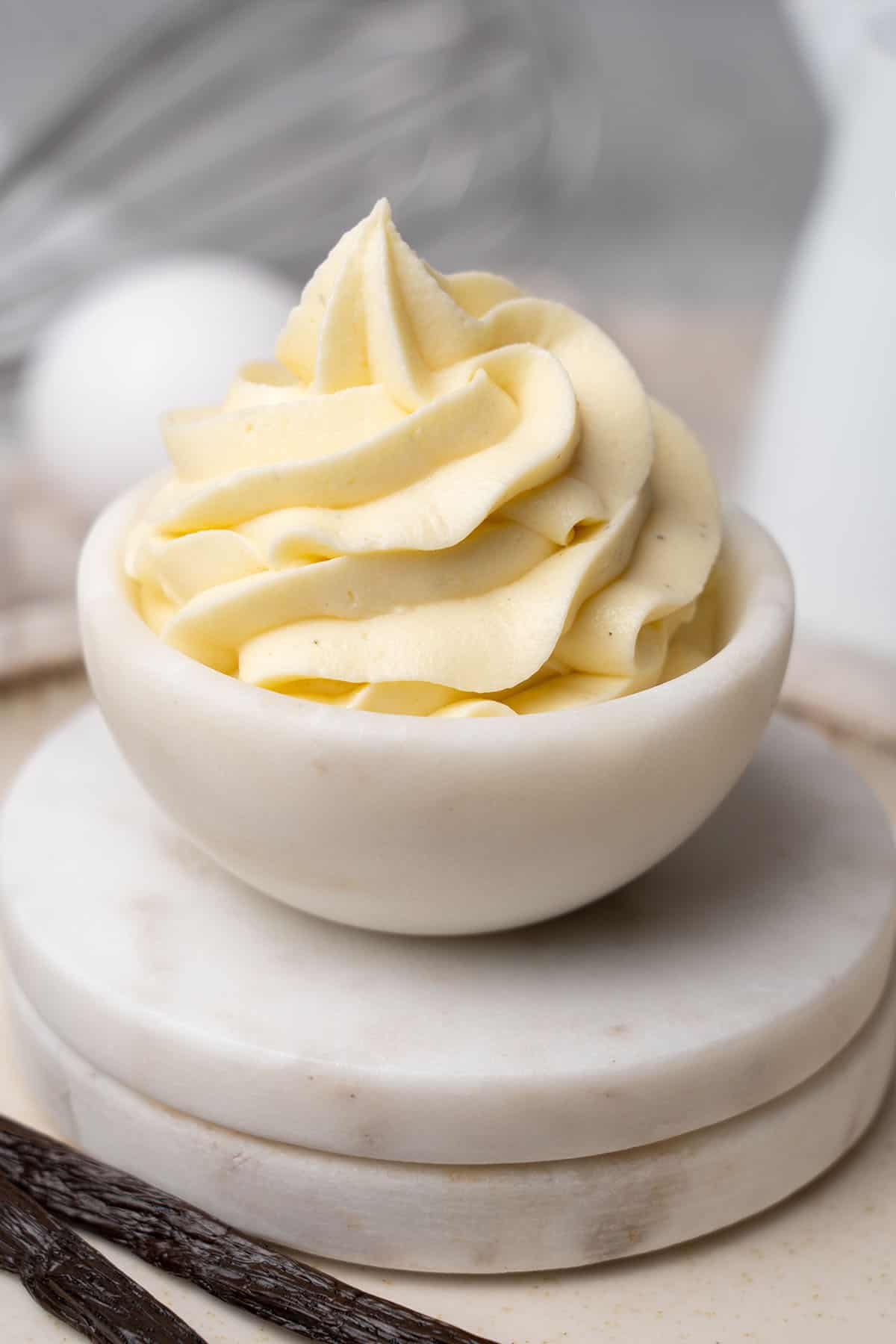
7. Ermine Frosting
Ermine buttercream frosting (or boiled milk frosting) is an old-fashioned recipe that is seriously worth trying! Make it from boiled milk, sugar, and a cooked flour paste whipped into softened butter. My ermine frosting recipe is well-balanced in sugar. Try my coconut frosting recipe with the same base and added coconut flavor. Honestly, it really is so fluffy and delicious.
Difficulty level - Moderate
Sweetness - Medium
Does it need to be refrigerated? Yes
Pros - It has the same fluffy, silky texture as IMBC and SMBC but it is eggless. Try this type of cake frosting for egg-free desserts.
Cons - It is more complex than other types of frosting, but well worth the effort!

8. Cream Cheese Frosting
Master a basic cream cheese frosting and the world is your oyster (or bakery). Cream cheese frosting tastes best on pumpkin desserts, red velvet cake, or carrot cake.
It's rich, tangy, and sweetened with powdered sugar, plus you can adapt it in so many ways. Peanut Butter Cream Cheese Frosting, Strawberry Cream Cheese Frosting, Raspberry Cream Cheese Frosting, and Lemon Cream Cheese Frosting are just some of the combinations you can try!
Difficulty level - Easy
Sweetness - Low
Does it need to be refrigerated? Yes
Pros - Cream cheese frostings' rich and tangy flavor profile makes them ideal for spiced cakes and recipes when buttercream might be too sweet.
Cons - It can be too soft to pipe precisely - for example, to create flower decorations - and the proportions in the recipe will matter. It is also the one that is more sensitive to heat.

9. Whipped Cream Frosting (Chantilly Cream)
Sometimes, just keep it simple and traditional. Whip heavy cream with powdered sugar and flavoring, and make one of the easiest types of cake frosting ever. Chantilly cream is light and delicate, undoubtedly perfect for cakes and pastries. Mascarpone Frosting and Chocolate Whipped Cream Frosting are two simple cake frostings that are also heavy-cream based.
Difficulty level - Easy
Sweetness - Low
Does it need to be refrigerated? Yes
Pros - Whipped cream frosting is light, fluffy, and versatile. What's more, it is incredibly easy and beginner-friendly!
Cons - Sometimes, if you use cream with a lower fat content, the frosting can be less stable. Therefore, it is essential to buy good quality, high-fat cream and make sure it is very cold before whipping.

10. Seven Minute Frosting
Certainly, anything that tastes this good but takes just seven minutes is a winner in my book! An old-fashioned seven-minute frosting is essentially a Swiss meringue. Whisk sugar and egg whites over indirect heat for seven minutes (sometimes with cream of tartar as a stabilizer).
Difficulty level - Moderate
Sweetness - Medium
Does it need to be refrigerated? Yes
Pros - Significantly, it only takes seven minutes!
Cons - The frosting will fail if there is any yolk in the egg whites. It is also not a long-lasting frosting and will not hold over time.

11. Ganache Frosting
Ganache is a velvety, smooth mixture of heavy cream and chocolate prepared in a particular way to create a delicious and versatile filling, dip, spread, frosting, or topping. If you want to learn more about what ganache is, read my post. Namelaka is similar to chocolate ganache but different in terms of preparation, check it out as well.
Difficulty level - Easy
Sweetness - Low
Does it need to be refrigerated? Yes
Pros - You can alter the flavor profile by using milk chocolate, white chocolate, dark chocolate, or even pink ruby chocolate.
Cons - If you want to pipe ganache frosting, you will need to add extra heavy cream and gelatin.
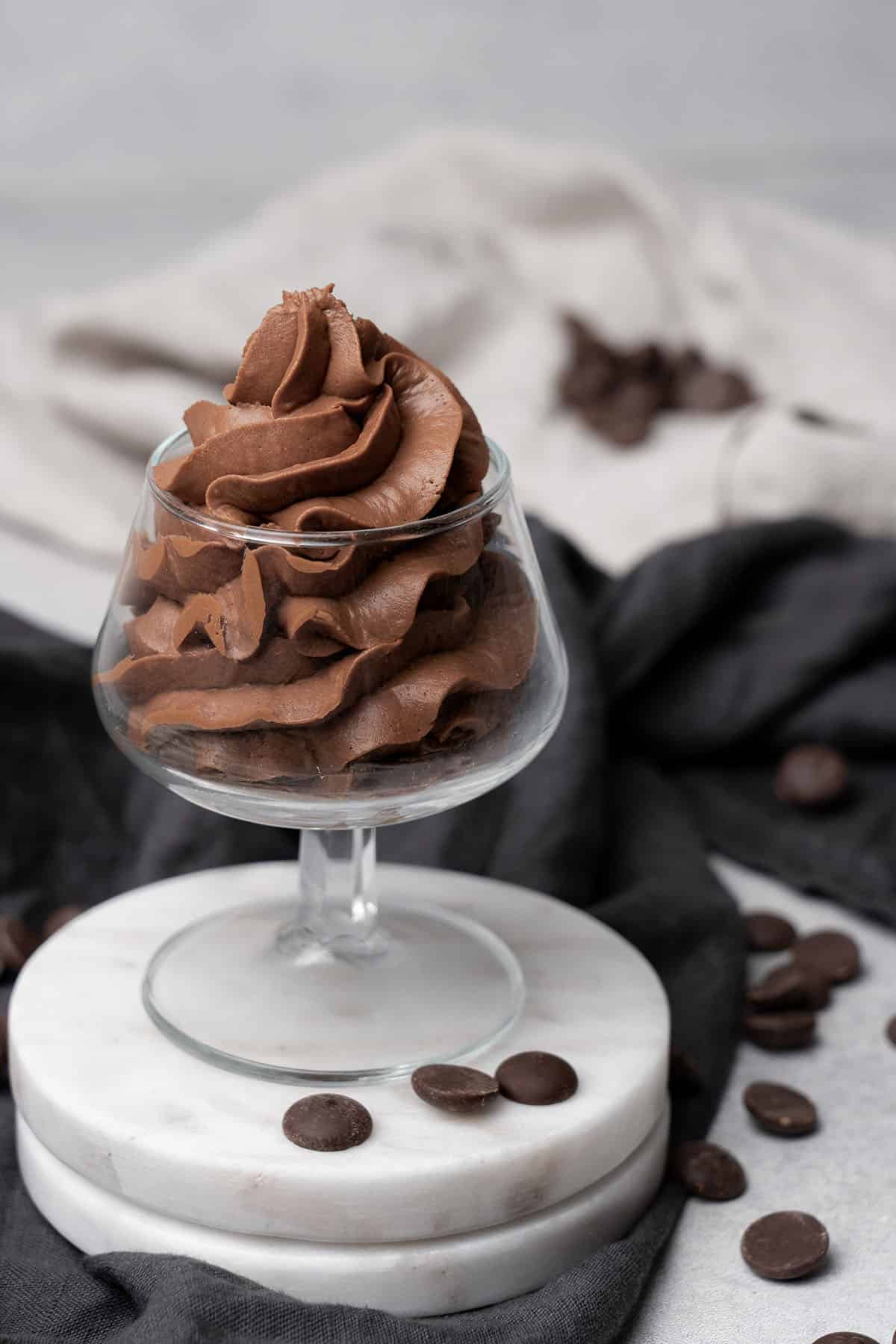
12. Icing and Glazes
Whilst not strictly classed as frostings, one can also finish cakes using a glaze or an icing. Icing recipes, like royal icing or fondant icing, do not always contain fat and are a mixture of powdered sugar and liquid, like water, milk, or egg whites. Some types of icing contain gelatin and can be very pliable, so you can make sugar flowers and other shapes. It can be easily colored and does not always require refrigeration.
Use glazes when you want a thin, semi-sheer, and glossy finish for cakes and baked goods. I love to use a glaze icing on blueberry donuts, or maple donuts.
I hope this list of all the kinds of cake frosting has helped you choose which one to make. Certainly, I want to make some cupcakes straight away. So, prepare the stand mixer, get your supplies, and get baking!

🍰 Different Types of Frosting Recipes
Here are some homemade frostings you will certainly love to try next.

25+ Different Types Of Frosting For Cakes and Cupcakes
- American Buttercream
- 7-minute Frosting
- Russian Buttercream
- German Buttercream
- French Buttercream
- Swiss Meringue Buttercream
- Italian Meringue Buttercream
- Lemon Buttercream
- Coffee Buttercream
- Raspberry Buttercream
- Chocolate Buttercream
- Cream Cheese Frosting
- Peanut Butter Cream Cheese Frosting
- Strawberry Cream Cheese Frosting
- Raspberry Cream Cheese Frosting
- Lemon Cream Cheese Frosting
- Chantilly Cream
- Chocolate Whipped Cream Frosting
- Mascarpone Frosting
- Whipped Chocolate Ganache Frosting
- White Chocolate Frosting
- Chocolate Cremeux
- Namelaka
- Ermine Frosting
- Coconut Frosting
- Nutella Frosting
- Funfetti frosting
- Oreo frosting
Instructions
- Choose from the list of frosting recipes
- Go to the recipe(s)
- Enjoy the different types of frosting!

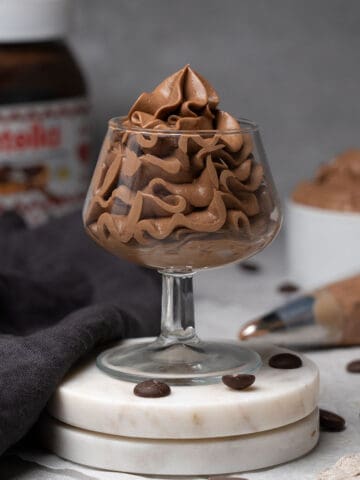
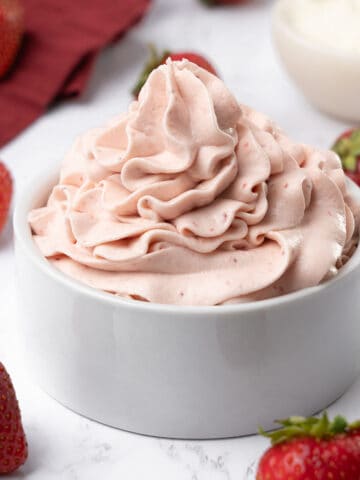

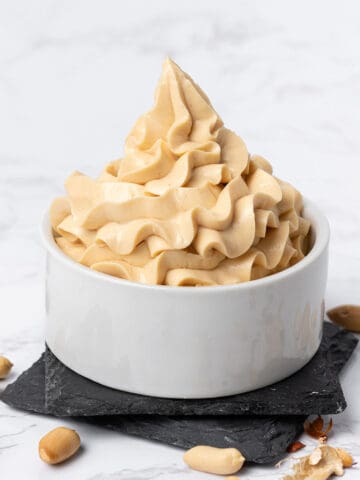




Leave a Reply